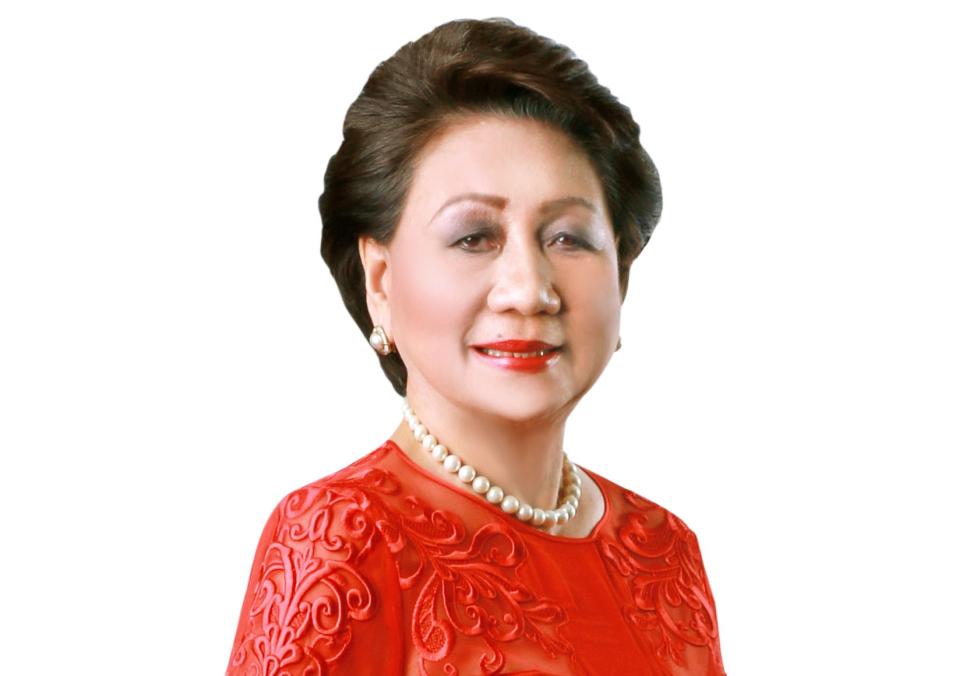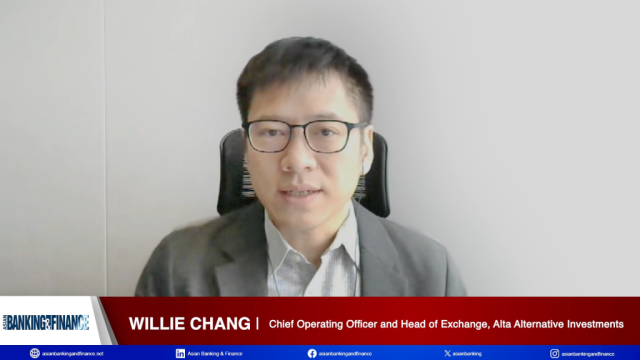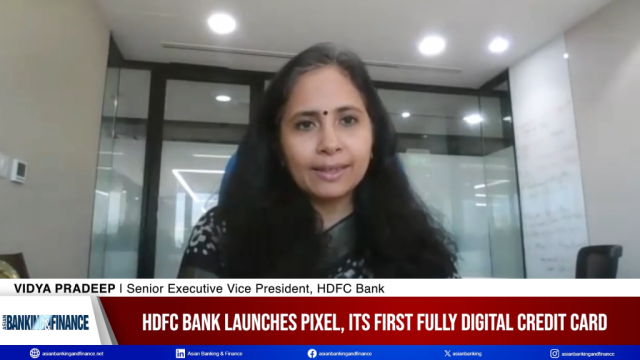
LANDBANK CEO Gilda Pico talks of ASEAN integration, financial inclusion, and regulatory pressures
Pico expects more mergers and acquisitions specifically among small rural lenders.
Despite showing a laudable performance with a steady growth in assets, loans, deposits, and improved asset quality, Philippine banks are still facing the challenge of financial inclusion. The country’s geographic make-up and the persistence of infrastructure gaps hinder the accessibility and usage of bank financial products and services especially in the far flung areas of the country, according to LANDBANK CEO Gilda Pico.
“While financial inclusion has been institutionalized by the BSP, bigger banks are not so keen in extending credit to the unbanked and underbanked sectors of the economy despite ample liquidity in the system. As a government financial institution, LANDBANK is actively pursuing financial inclusion as a means to achieve an inclusive and broad-based growth,” she notes.
In an exclusive interview with Asian Banking and Finance, Pico reveals her philosophies, goals, and what the bank is doing to boost financial inclusion.
What are the latest and most pertinent trends and challenges in the Philippine banking sector today?
The Philippine banking industry remains a pillar of strength and stability of the national economy over the years. With its combined resources, the industry continued to fund the economy’s productive sectors which, in turn, generated employment, increased domestic output, boosted consumption spending, and supported the country’s overall growth and resilience amidst the global financial turmoil in recent years.
The Philippines sustaining its high growth performance with a 6.9 percent GDP growth as of the first quarter of 2016 that even surpassed China’s 6.7 percent growth, is partly attributable to the strong and healthy performance of the banking system.
Trends:
Sustained growth and stability amidst global economic slowdown
Philippine universal and commercial banks remained fundamentally and operationally strong and sound as exhibited by mainstream indicators such as steady growth in assets, loans, deposits, and improved asset quality which stabilized the domestic assets markets.
The industry also manifested ample funding and liquidity, profitability, and satisfactory loan-loss reserves in spite of relatively high loan growth. Anchored on the economy’s solid growth and strong macroeconomic fundamentals, the banking industry as a whole registered a laudable performance (in the midst of a slowing global economy). The Philippines was the only country in the Asia and Pacific region that was given a positive rating outlook from “stable” by Fitch Ratings for 2016.
Regulatory pressures driving higher capitalization among banks
Consistent with the country’s implementation of Basel 3, there was also a continuing build-up of banks’ capitalization where Common Equity Tier 1 (CET 1), the highest quality among instruments eligible as bank capital, comprised the bulk or 83 percent of total bank capital.
Continuing consolidation activities through mergers and acquisitions
In the face of the ASEAN integration, there will be more mergers and acquisitions specifically among small rural lenders such as rural banks and cooperative rural banks. As of end-2015, the most number of closures was registered in the rural banking sector with a total of 543 closures. As for the whole banking industry, the total number of banks decreased by 2.5 percent to 632 Head Offices from 648 Head Offices in 2014. This is a significant trend that will reduce the banking industry’s structural weaknesses, strengthen balance sheets, improve operational efficiencies and encourage innovation while being conscious of risk exposures.
Strengthening risk and compliance management to complement business strategy
A continuing trend is the industry’s focus on risk management and compliance. Philippine banks are expected to continuously strengthen their risk and compliance management systems to cope with new regulatory requirements by enhancing their risk capabilities and culture which would entail higher costs.
Challenges:
Despite hitting the “sweet spot”, the Philippine universal and commercial banking industry will continue to confront new challenges wrought by internal and external structural, financial and regulatory reforms as well as global financial volatilities arising from uneven global growth prospects, uncertainty in oil price movements and differences in monetary policy actions sought by global economies.
Stiffer Competition under Full Banking Liberalization and ASEAN Integration
The expected influx of bigger banks from the region will stir greater competition in the local banking industry that may impact heavily on banks’ net income margins. Given this, local banks need to search for more revenue streams and growth opportunities by increasing loans and credit penetration especially in the growth areas and intensify business activities generating fee-based incomes such as in remittances, investment banking, trust banking and trading.
Financial Inclusion
A great challenge for the Philippine banking industry is financial inclusion. While financial inclusion has been institutionalized by the BSP, bigger banks are not so keen in extending credit to the unbanked and underbanked sectors of the economy despite ample liquidity in the system.
A parallel challenge is that the Philippines is an archipelago and the country’s geographic make-up and the persistence of infrastructure gaps hinder the accessibility and usage of bank financial products and services especially in the far flung areas of the country.
As a government financial institution, LANDBANK is actively pursuing financial inclusion as a means to achieve an inclusive and broad-based growth.
What do you consider as your biggest achievement so far as the CEO of the Land Bank of the Philippines?
I have been with LANDBANK for 35 years now and therefore saw it through many milestones. However, what I consider as one of my biggest achievements is being able to steadily grow and fortify the Bank’s commercial operations while ensuring faithful pursuit of the institution’s social mandate.
Since I assumed presidency, we increasingly focused on widening credit outreach to the Bank’s priority sectors, which include small farmers and fishers, MSMEs, countryside financial institutions, agri- and aqua-businesses, and agri- aqua-related projects of local government units.
From 65% in 2005, loans to priority sectors now make up at least 80% of the Bank’s total loans to all sectors. From PHP80.2 billion in 2005, our loans to priority sectors reached PHP387.4 billion in 2015, representing a record-high share of 88.7 percent against the total loans to all sectors of PHP436.7 billion. This, even as we continue to achieve record net income year after year, allowing LANDBANK to retain its rank among the best performing banks in the country.
LANDBANK’s assets also crossed the trillion mark for the first time in 2014 while in 2015, we hit a record-breaking PHP1.05 trillion in total deposits. We also ended 2015 with net income at PHP 13.3 billion, the fourth largest among 42 universal banks in the country. This allowed us to remit PHP6.6 billion in cash dividends to the national government, making LANDBANK the highest cash dividend remitter among the country’s government-owned and controlled corporations.
LANDBANK’s successful balancing act proves that development banking can be profitable; that the poor and marginalized can be banked on and still deliver bottom line for the company. All they need is a true partner in growth, which is what we always strive to be.
What are your key business philosophies?
First, value your people. No business can operate without employees and LANDBANK would not have been where it is now, if not for the thousands of Landbankers who made every small and big accomplishment possible. It is important to make all employees feel that their work has purpose and meaning, and are vital to the accomplishment of the organization’s goals. At LANDBANK, we strive to create a culture of growth for our people, where they can explore and develop their potential.
Second, build customer focus. At LANDBANK, we often say, “service is the heartbeat of LANDBANK” – because service excellence has never been more crucial in this age of automation, innovation, and ever-growing connectedness, where an unhappy customer can easily spread negative opinion about a company. We thus strive to enhance customer focus and nurture a service-oriented culture that puts customers first at all times.
This is best exemplified in our tagline – “We help you grow” which conveys our proactive commitment to look after and promote the welfare of our clients whom we consider not only as clients but partners in growth. Our objective is to not only respond but also anticipate their needs so we make an effort to pay attention to their needs, listen to them, and learn from them.
And third, innovate and embrace change. Business conditions constantly change and a successful business not only adapts to change but actively looks for opportunities to innovate, expand, and adopt new ways of doing things. Change enables the business to become more efficient, attract new markets, take advantage of new technologies, and deliver customer service in new ways.
It is thus important to promote a strong culture of innovation, where people understand that their ideas are valued and are encouraged to look for new and better ways to get things done.
What three goals are you focused on this year?
As in every year, our goals for this year will be anchored on LANDBANK’s three business goals: pursuit of mandate, institutional viability, and customer service.
In the pursuit of our countryside development mandate, we will further grow our loan portfolio to the Bank’s mandated sectors and continue expanding financial assistance in support of the government’s priority programs. Promoting financial inclusion will likewise be a priority this year as we hope to bring more Filipinos into the fold of formal financial services through greater financial awareness and empowerment as well as by improving accessibility to banking services.
Sustaining our financial viability is a continuing challenge. While we have already hit the trillion mark in asset and deposit level and sustained the increase in our net income, we need to continually think of new businesses and income streams to grow our bottom line. This year, we will further grow our private deposit base and increase revenue from core business segments as well as non-traditional sources.
In improving our customer service, our efforts are directed at making Bank clients satisfied and delighted. We are putting greater emphasis on developing pioneering products that are especially designed to anticipate and addressthe needs of our clients. We are working on improving internal processes particularly in relation to accelerating new product and channel development; enhancing operations thru technological solutions; and establishing a robust risk management system.
Moreover, we will continue to forge strategic alliances and partnerships in the development of our products and systems as well as in the delivery of services and programs.
In order to achieve all these objectives, we acknowledge the need for a strong, well-developed human resource to face the challenges of a highly competitive environment. We are therefore committed to attract, train, develop and compensate talents that are consistent with the best in the world.
Please tell us more about your recent projects/initiatives in the bank.
Financial inclusion will continue to be a priority initiative for LANDBANK this 2016 in support of the government’s objective to bring more Filipinos in unbanked areas under the umbrella of formal financial services.
In line with this, we have launched a nationwide Financial Inclusion Caravan, the first leg of which was held last June in nine third- and fourth-class municipalities across the country. We were able to reach out to around 500 participants per area, or a total of 4,500 unbanked and un-served members of communities.
We intend to increase this number as we cover more municipalities moving forward. The forums include modules on financial literacy, as well as business and livelihood opportunities as a way of introducing the participants to formal banking services.
We also continue to aggressively invest on alternative banking channels and customer touch points to better reach out to underserved areas, especially in the countryside. One such channel is the Point-of-Sale (POS) Cash Out, which extends the functions of a Bank branch to various cash-out partner institutions by allowing peso withdrawal transactions from certified POS terminals.
The archipelagic nature of the Philippines makes it a challenge for some Filipinos to gain access to banking services. Getting to a bank branch or an ATM sometimes takes half a day’s worth of travel or entails crossing a river or the sea.
With the POS Cash Out, LANDBANK cardholders have more convenient access to their money and save on transportation costs that they usually incur when transacting in neighbouring towns.
Moreover, since setting up branches and ATMs costs millions of pesos, the POS Cash Out allows LANDBANK to bring financial services closer to Filipinos in far-flung provinces at far lesser costs. The Bank’s partner institutions also earn income from service fees as Cash Out agents and benefit from the foot traffic that the service brings to their stores. Included in the Bank’s roster of partner-institutions are cooperatives, farmers and fishers associations, rural banks and other countryside financial institutions, and private entities such as small and medium enterprises.
Moving forward, we are looking to partner with more institutions as we recognize the vital role of strategic alliances in making strides towards our financial inclusion thrust. We likewise remain on the lookout for ways to leverage technology to achieve our vision to improve the quality of lives in the countryside and truly be the Filipino people’s partner in growth.























 Advertise
Advertise







